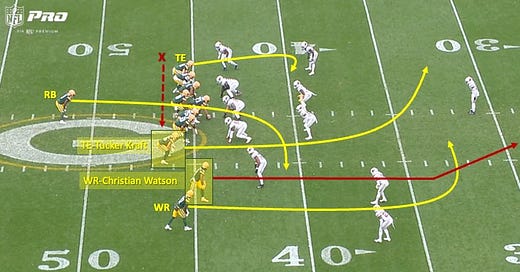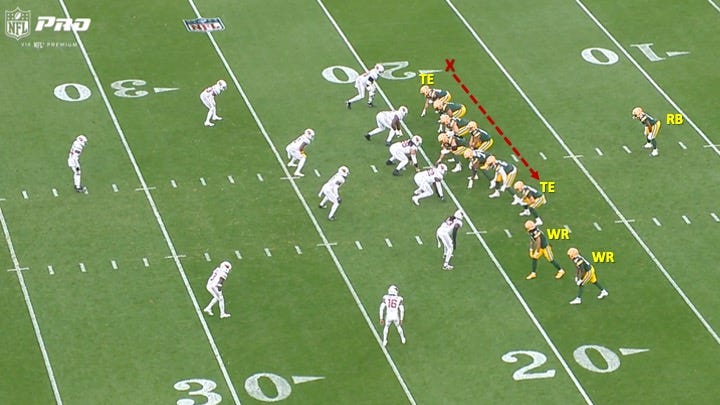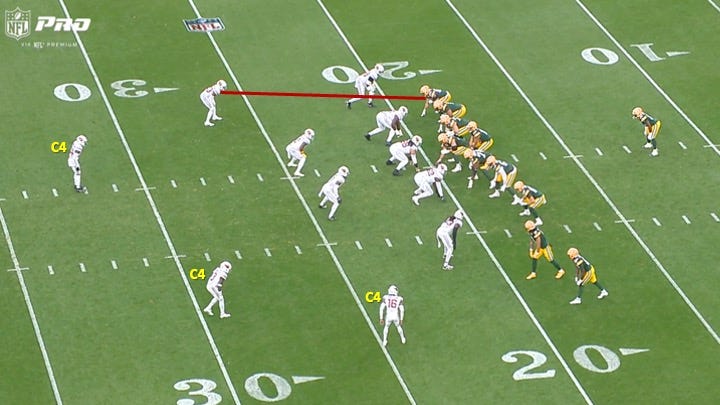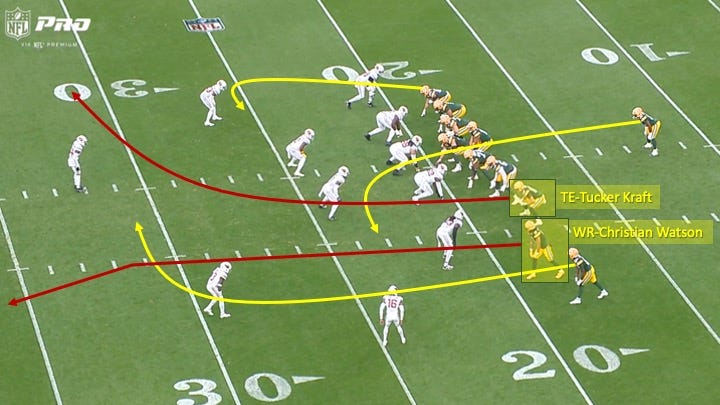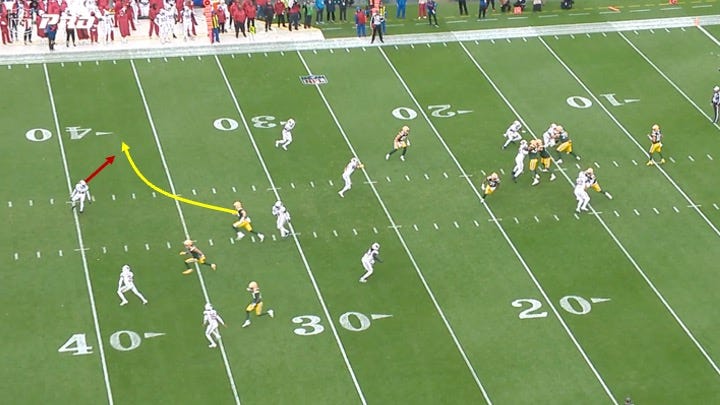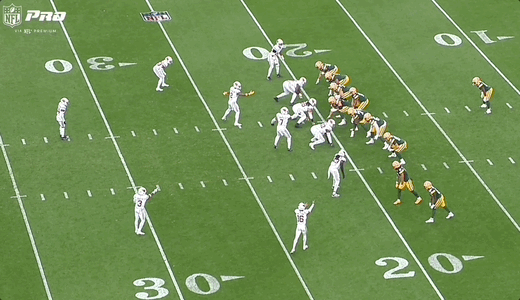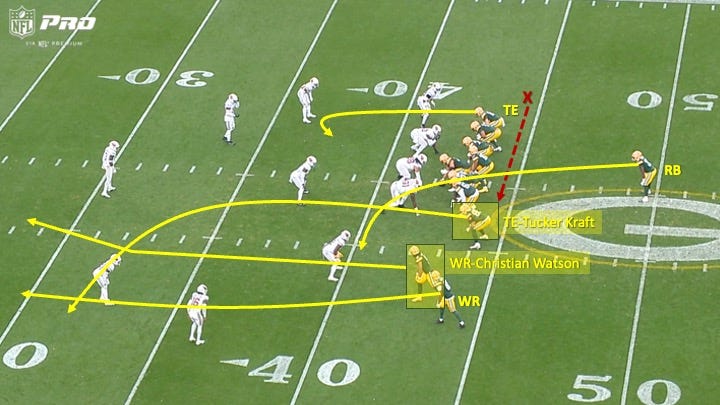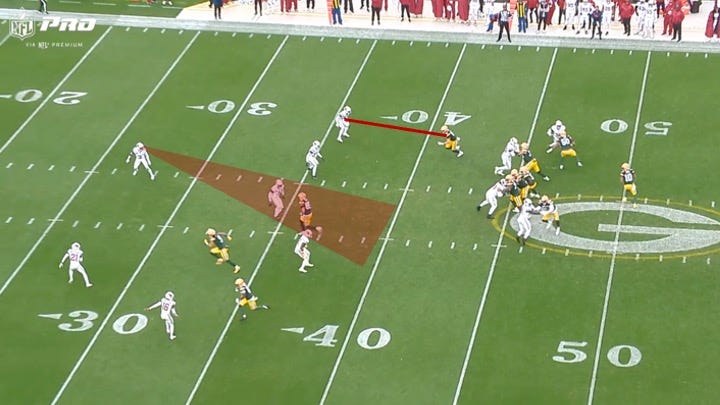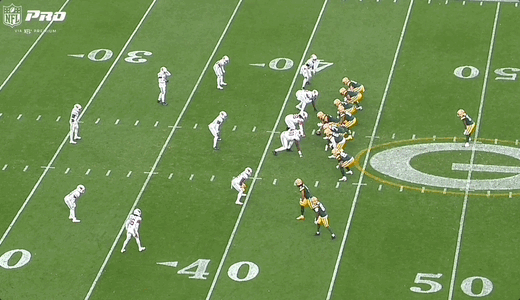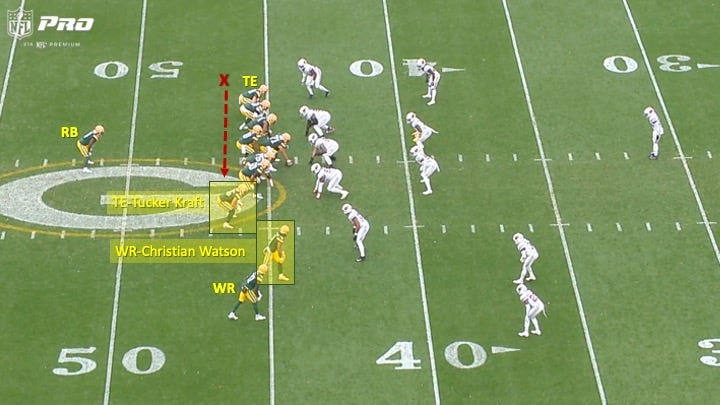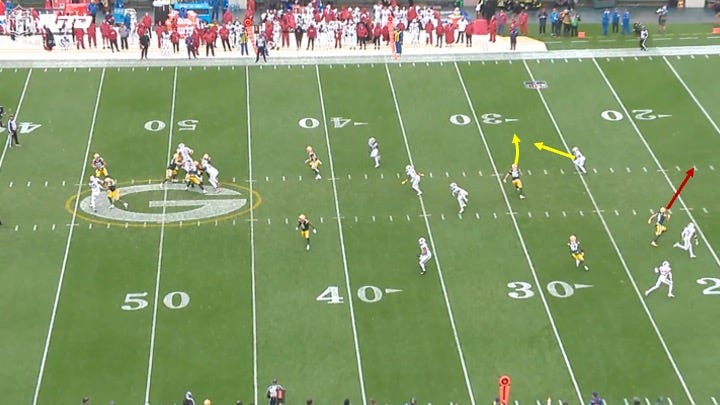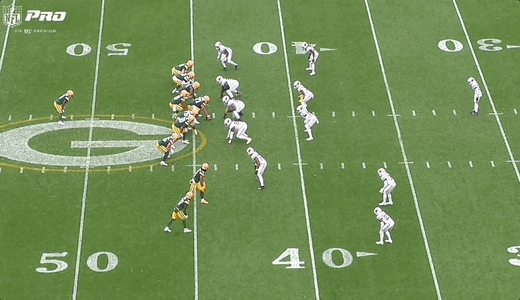Good play-calling is often about taking in information during a game and making tweaks or adjustments in response. The best coaches present different looks to the defense, see how they react, and then have the flexibility to call plays or alter routes to precisely attack them.
There are few in the game that do this better than Packers Head Coach Matt LaFleur.
On this first example from a Week 6 game against the Cardinals last season, LaFleur did this brilliantly, using what he saw from Arizona’s defense early in the game to dial up a 44-yard touchdown pass that gave Green Bay a commanding 24-0 lead.
First, let’s take at the plays that set up the score. This was a 1st-and-10 about 9 minutes into the game. Green Bay came out in 12 personnel (1 RB, 2 TE) and motioned tight end Tucker Kraft to a 1x3 closed formation with reduced splits to the strong side:
The Cardinals matched up in base personnel and would end up playing quarters coverage with the backside corner locking onto tight end Ben Sims (#89):
The Packers would have a Dagger route concept called off of play-action, but there are a few key points to note here. The inside #3 receiver (Kraft) would run a deep-over route. Christian Watson, the #2 receiver, would run a deep-corner route instead of the traditional thru/vertical that you normally see with dagger:
The back-side safety would lock onto Kraft’s over-route, leaving the deep half of the field behind him open:
Jordan Love would ultimately complete this pass to Romeo Doubs late in the play for 19 yards, but LaFleur made a mental note of how the Cardinals defended this:
A few plays later, the Packers would come out in the same personnel grouping and motion to the same formation on first down. This time, they would run a “Sail” concept out of it, with Kraft taking his route to the sideline and Watson running a deep post:
The Cardinals would play the same coverage with the back-side corner locking onto the lone tight end to his side and the back-side safety again turning his attention to Kraft as the #3 receiver:
Because Kraft’s route would break away from the safety, there was nothing to hold him. So he was able to drop deep and get on top of Christian Watson’s post. The result of the play would ultimately be an incompletion:
However, LaFleur now had a pretty good idea of how the Cardinals would respond to that formation, as he said after the game:
“We were just looking at the pictures and seeing how they responded […]. We tried to hit Tucker on what we call a sail route earlier and just noticed how the backside safety was playing it.”
It’s interesting that LaFleur said the sail route was the one that let him know how the safety would play it when the dagger concept they ran earlier in the game was the better indicator. Maybe the sail was confirmation of it? Maybe LaFleur didn’t want to give away state secrets in the press conference?
Either way, LaFleur knew he could get the Cardinals into the desired coverage and then take advantage of it with a small tweak. As Jordan Love said after the game, LaFleur “dialed it up on the sideline” and called it two possessions later on the very first play after a 39-yard punt return into Cardinals territory.
He showed all of the pre-snap elements we saw on the previous two plays. It was the same down and distance. The Packers were in 12 personnel again (the Cardinals would match up in base like they did on the first possession). Tucker Kraft would motion across the formation to create a closed 1x3 formation. And Christian Watson was the #2 receiver to the strong side:
The Packers would then run the same Dagger concept off of play-action as on the first example shown above. However, because LaFleur now knew that the Cardinals would likely play quarters and the #3 route from Kraft would occupy the back-side safety, he had Watson run a deep-post instead of the deep-corner route:
As expected, Kraft’s route ate up the back-side safety. And that left the speedy Watson running his route against the other deep safety with a ton of space to create separation across the field:
That’s just great offensive football.
Here’s another example from a game later in the season against the Jaguars. That day, Jordan Love left the game early due to injury.
No situation calls for in-game adjustments more than when your starting quarterback goes down. LaFleur would be up to the challenge once again.

